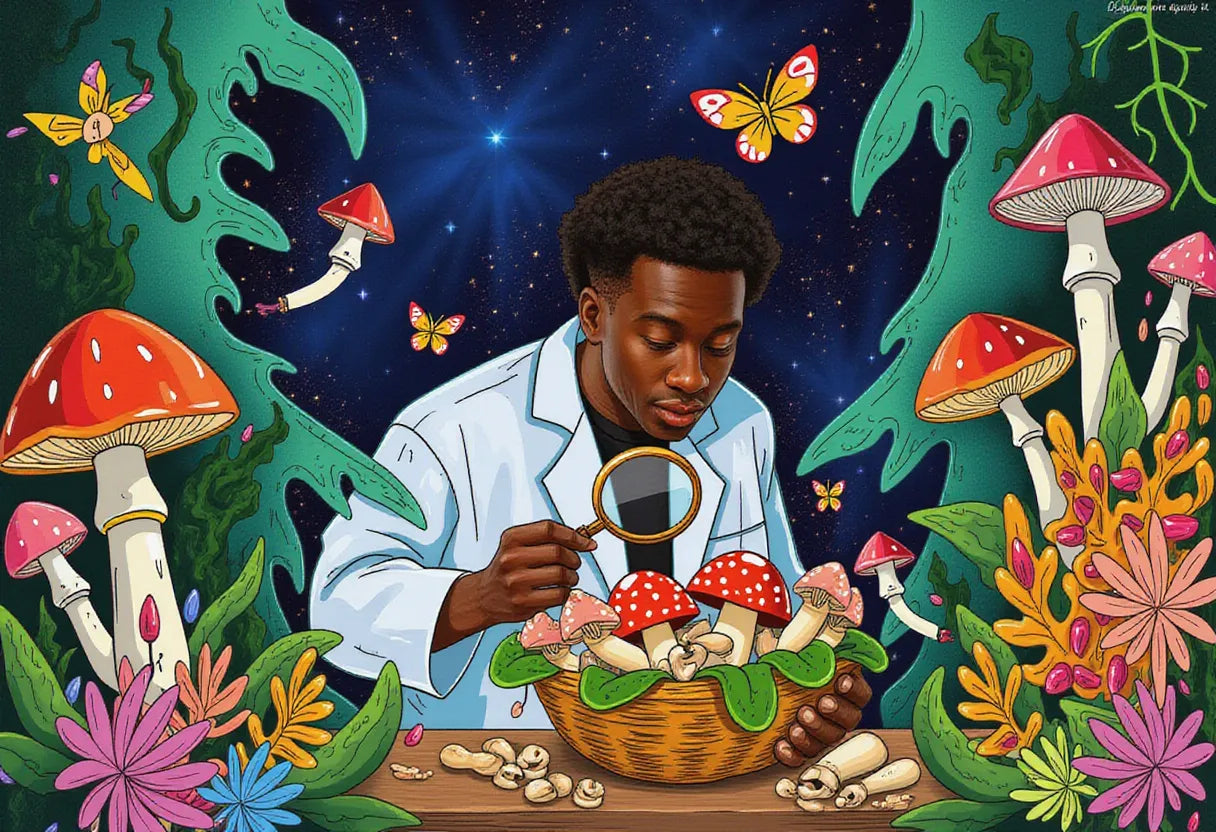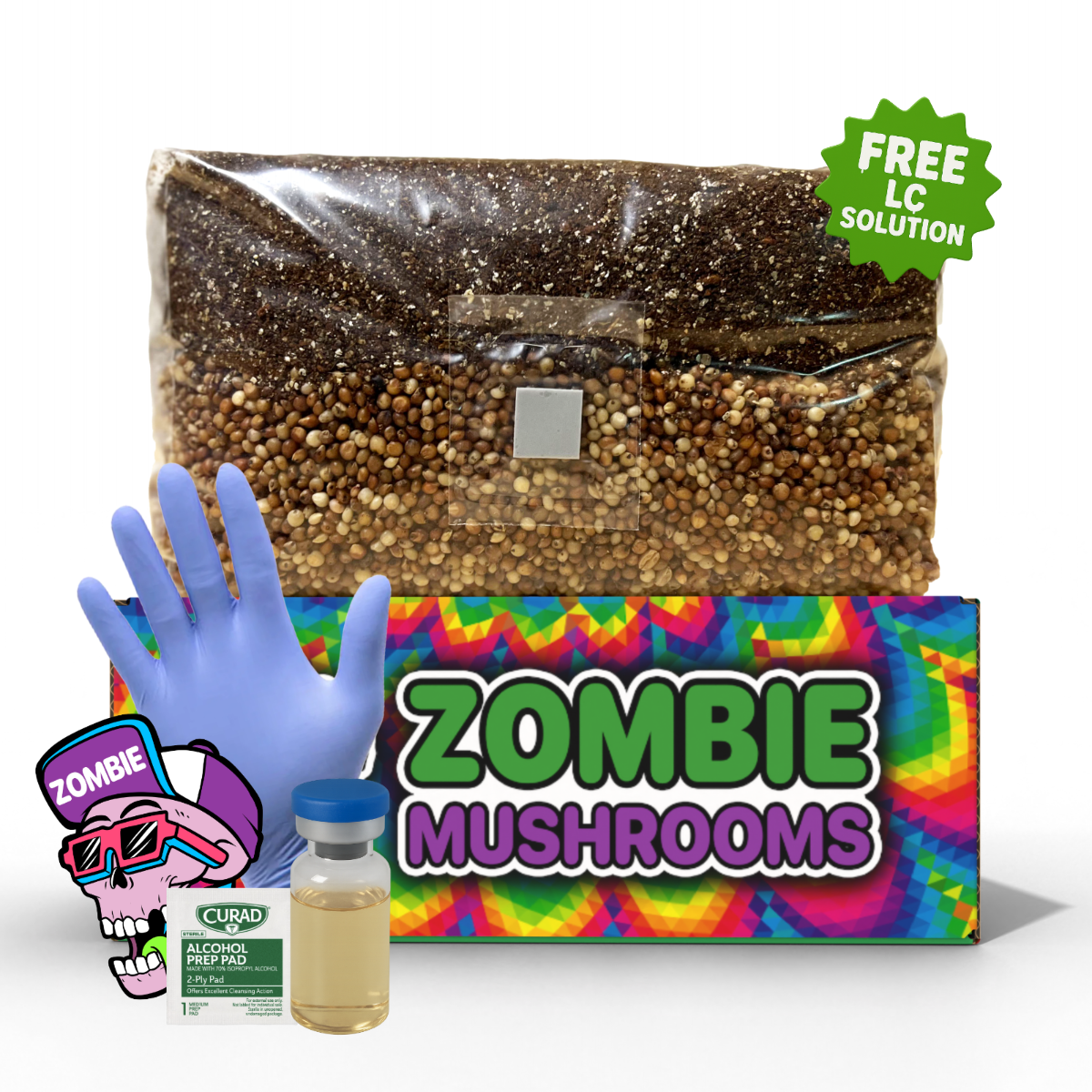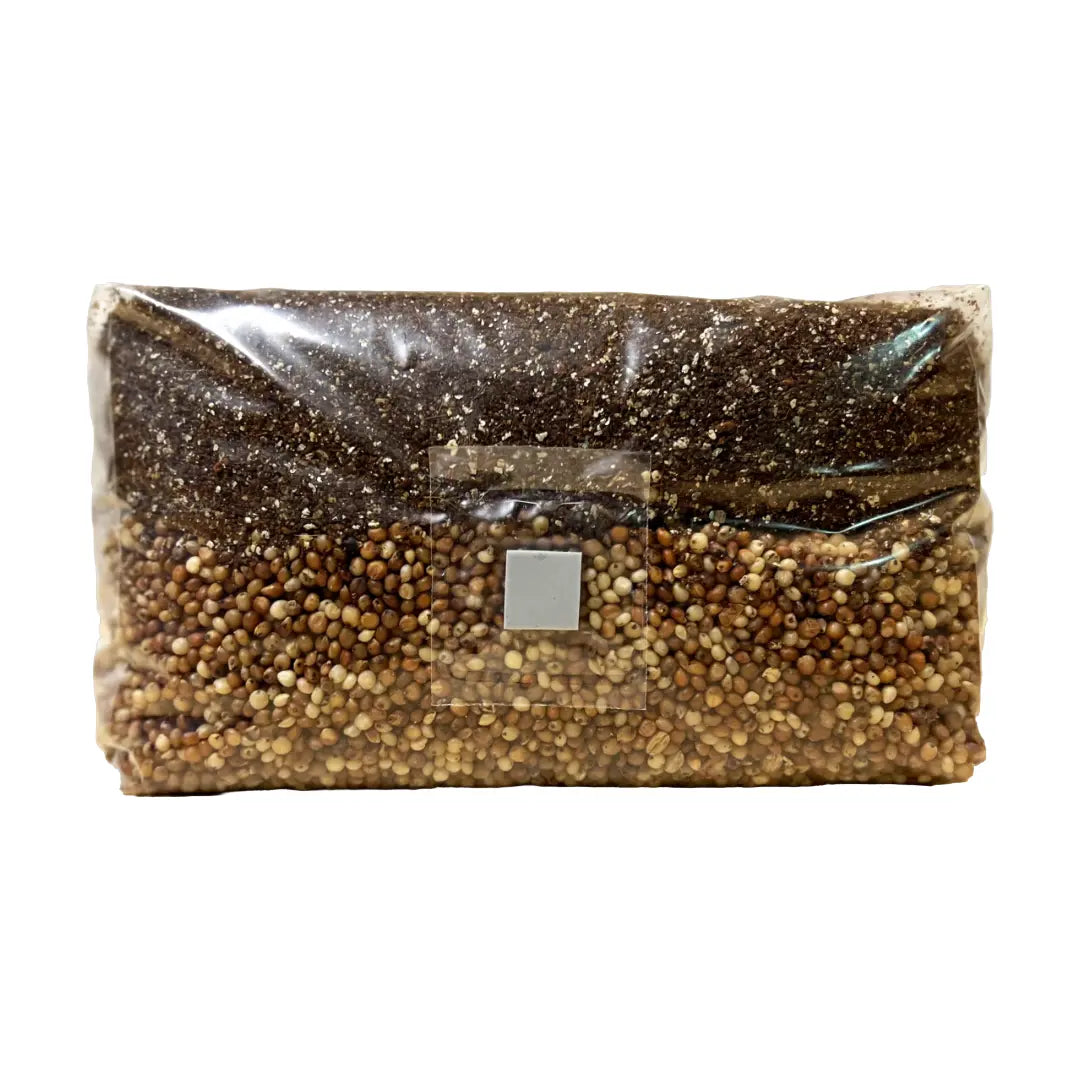⬇️ Prefer to listen instead? ⬇️
- Fresh whole mushrooms last 7–10 days in the fridge; sliced ones spoil in 4–7 days.
- Paper bag storage makes mushrooms last longer because it reduces moisture buildup.
- Sour or ammonia-like smells mean mushrooms are spoiled and could cause foodborne illness.
- Dried mushrooms stored properly can remain usable for up to 12 months.
- Blanched or sautéed mushrooms freeze better and last up to a year.
Understanding how long mushrooms last and knowing the first signs of mushroom spoilage are important for keeping their good flavor and saving money in your kitchen. Whether you're buying mushrooms at the store or growing your own with mushroom-growing kits like those from Zombie Mushrooms, storing them the right way can make them last much longer and lead to less waste. In this complete guide, we’ll break down how long different mushroom types last, look at common mistakes that cause them to spoil faster, and share easy ways to store, freeze, and use mushrooms that are almost going bad. You can enjoy a steady supply of fresh mushrooms without worrying about spoilage, our mushroom grow kit makes it easy to harvest only what you need, right when you need it.

How Long Do Fresh Mushrooms Last in the Fridge?
Fresh mushrooms are tasty and full of nutrients, but they spoil fast because they hold a lot of water. On average, fresh mushrooms last between 7 to 10 days in the refrigerator if you keep them whole and store them correctly. Sliced mushrooms, however, typically last only 4 to 7 days. This is because cutting them exposes more surface area, which makes them spoil faster.
Here’s how long different types last
- White button mushrooms: 7–10 days (whole); 4–5 days (sliced)
- Cremini or baby bella mushrooms: 7–10 days
- Portobello mushrooms: 7–10 days, but large gills may hold moisture
- Sliced mushrooms (any variety): 4–7 days
- Wild mushrooms: 3–5 days because their environment is less controlled
- Home-grown mushrooms: 5–7 days if stored correctly
Mushrooms should never be kept at room temperature for too long — moisture and warmth make microbes grow faster. This causes slime, discoloration, and spoilage within hours.
Storing your mushrooms in the right conditions from the start is key. Also, always check the best-by date on packaged mushrooms and use your senses as a backup — smell and texture are good guides when it comes to knowing if mushrooms are spoiled.
Dried Mushrooms Have a Long Shelf Life — If Stored Right
Want to have more mushrooms on hand? Dried mushrooms are useful in kitchens because of their intense flavor and how long they keep. When stored correctly in a cool, dark, and dry place, dried mushrooms can last from 6 to 12 months or even longer.
Key storage tips for dried mushrooms
- Use airtight containers: Glass jars with tight-fitting lids work best. Oxygen and humidity hurt the flavor and cause spoilage.
- Avoid light and moisture: Store in a dark cupboard or pantry; make sure mushrooms are completely dry before sealing.
- Label your jars: Write the date on your jars to keep track of how old they are and use the older ones first.
- Post-rehydration caution: Once you soak them, rehydrated mushrooms are like fresh ones. You should keep them in the fridge and use them within 1–2 days.
Dried mushrooms are especially good in dishes that need deep umami flavor, like risottos, ramen broths, or sauces. Some popular types include shiitake, porcini, morels, and chanterelles.

How Storage Methods Impact Mushroom Shelf Life
The way you store mushrooms makes a big difference in how long they last. Storing them wrong lets mold and slime grow fast. But storing them the right way can make them last days or even weeks longer.
Let’s compare storage methods:
| Storage Method | Shelf Life Estimate | Pros | Cons |
|---|---|---|---|
| Original plastic packaging | 3–5 days | Easy to carry | Traps moisture, causes faster spoilage |
| Paper bag | 7–10 days | Lets them breathe, absorbs moisture | Not as good for travel |
| Airtight plastic container | 5–7 days (if lined with towel) | Can use again | May trap too much wetness |
| Wax paper or mesh bag | 5–8 days | Good airflow and moisture control | Needs refrigeration |
| Vacuum-sealing | Weeks (if frozen) | Good for keeping a long time | Needs special equipment |
Try to keep your fridge at 34–38°F (1–3°C) — this is the best temperature to keep them fresh without freezing them. And never wash fresh mushrooms before putting them in the fridge — the extra water makes them spoil faster.

Common Mushroom Spoilage Signs
Moldy mushrooms are bad to look at and can be harmful. It's important to know the signs of mushroom spoilage early.
Watch out for
- Texture Changes: If they feel slimy or slick, it’s often the first bad sign. Good mushrooms are dry and a little soft, not slippery.
- Odor Shift: Fresh mushrooms smell mildly earthy. Bad smells like sourness, fishiness, or ammonia mean bacteria are growing.
- Color Discoloration: Dark spots, patches, or looking dull all over show they are breaking down. This also includes looking very wrinkled or having shriveled edges.
- Mushy Stems: Soft or collapsing stems often happen before the inside starts rotting.
- Visible Mold: White fuzzy stuff or colored mold means you should throw them out.
Some natural bruising — especially on wild mushrooms or those picked by hand — is not harmful. But if you see bruising along with any signs listed above, the mushroom is likely spoiled.
Rule of thumb: "When in doubt, throw it out." It's better to be safe than sorry with food like mushrooms that spoil easily.

Best Way to Store Home-Grown Mushrooms
If you've started growing mushrooms indoors using kits like those from Zombie Mushrooms, you get something great — very fresh mushrooms you grew yourself. However, they can spoil faster than those from stores. This is because of natural soil bacteria and storage conditions at home.
Here’s how to keep your harvest fresh
- Harvest dry: Having moisture when you pick them raises the risk of rot. Don't pick them right after misting.
- Don’t wash before storing: Use a dry brush or cloth to clean dirt off the outside instead.
- Store in breathable bags: Wax paper or mesh produce bags help control how much moisture is there.
- Place in the refrigerator immediately: Put them in vegetable drawers to avoid temperature changes.
- Consume within 5–7 days: Home-grown mushrooms often don't last longer than a week because it's harder to keep the temperature and moisture just right at home.
Also, check your growing area often for mold, bacteria, or fruit flies. These can make your mushrooms spoil faster after you pick them.

Can You Freeze Fresh Mushrooms?
Yes, but you shouldn’t just put raw mushrooms in the freezer. Mushrooms have a lot of water. If you freeze them raw, they often become limp, rubbery, or feel gritty when they thaw.
For best results
First, wipe mushrooms clean with a damp paper towel.
- Blanch or sauté them a little — this stops them from spoiling.
- Quickly freeze them one by one on a baking sheet.
- Move them to freezer-safe bags or containers and push the air out.
Mushrooms frozen the right way can last up to 12 months. Use them in cooked dishes like soups, stir-fries, sauces, or pasta — they are not good for raw salads.

Mistakes That Make Mushrooms Spoil Faster
Many people accidentally store mushrooms in ways that make them spoil much faster. Avoid these common errors when handling mushrooms
- Washing before refrigeration: Adds extra water — this makes them spoil faster.
- Plastic clamshell packaging: Often traps water, which makes them spoil faster.
- Wrong fridge temp: If the temperature is over 40°F, it risks bacteria growing.
- Putting too many in containers: Mushrooms need space; too many together create wet spots.
- Storing near foods that make ethylene gas: Keep mushrooms away from apples, tomatoes, or avocados. Gas from these speeds up decay.
With a few simple changes, your mushrooms will stay fresh longer and taste much better when you cook them.

How to Handle Different Mushroom Varieties
Different mushrooms are different. They have different textures and how easily they spoil. This affects how long they last and how you store them.
Dense Varieties (Shiitake, Portobello, Cremini)
- Last longer (up to 10 days when stored correctly)
- Are firm, which makes them good for freezing or drying
- Store in material that lets them breathe (wax paper, mesh bag)
Delicate Varieties (Enoki, Oyster, Maitake)
- Spoil quickly — often go bad in 3–5 days
- Are great in soups or stir-fries but dry out fast
- Use them soon and store them gently in paper bags
Wild Mushrooms (Chanterelles, Morels, Chicken of the Woods)
- How long they last can vary based on where they were found
- Best to use within 2–3 days
- Don't wash them — brush them clean and put them in the fridge
Cultivated Mushrooms
- Usually grown in clean places and stored reliably
- Tend to last a bit longer than wild ones
Knowing about each type helps you decide which ones to cook first. This means less food goes to waste.

What to Do with Mushrooms Close to Expiring
Don't throw out mushrooms if they look a bit old. Slightly dry or wrinkled mushrooms can still be cooked in creative ways to get the most flavor and waste less food.
Here are some ways to use them
- Make mushroom broth: Cook them slowly with onion, garlic, and herbs to make a strong, useful liquid base.
- Add to risottos or pastas: This makes cooked dishes taste more earthy.
- Turn into mushroom powder: Dry them and grind into a seasoning to add umami flavor.
- Sauté into sauces or stews: Their soft texture mixes well into hot dishes.
- Bake into savory tarts or pizzas: Looking a little old won’t hurt the final taste.
Reducing food waste is good for your money, and it's better for the planet, too.
Make Every Mushroom Count
Mushrooms are great for cooking. They add flavor and nutrition. But they are only good when stored right. Use simple ways to store them, like breathable bags. Avoid extra moisture. And know the signs that they are going bad. This helps you know how long do mushrooms last and makes sure you use them all.
You might buy mushrooms at the market or grow them yourself with a kit from Zombie Mushrooms. Knowing how to store them helps you cook better, waste less food, and have more meals with their good flavor.
Citations
- U.S. Department of Agriculture. (n.d.). Safe Handling of Raw Produce and Fresh-Squeezed Fruit and Vegetable Juices. https://www.fsis.usda.gov/
- Ingham, B. H., & Ingham, S. C. (2009). Dehydrating Mushrooms. University of Wisconsin–Extension. https://fyi.extension.wisc.edu/safepreserving/2009/12/01/dehydrating-mushrooms/
- National Center for Home Food Preservation. (2018). Freezing Mushrooms. https://nchfp.uga.edu/how/freeze/mushroom.html



